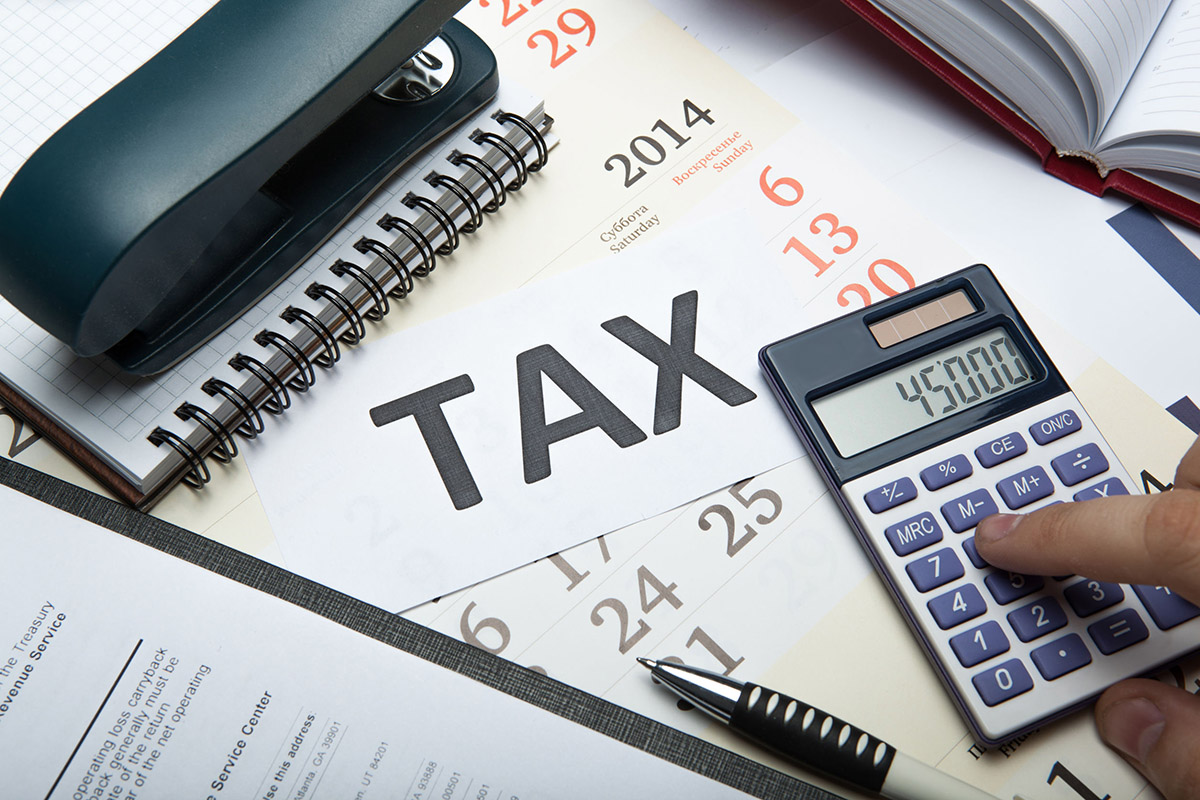

Finance
What Is A Net Lease Investment?
Published: October 18, 2023
Discover the benefits of net lease investments in the finance industry. Learn what a net lease investment is and how it can enhance your financial portfolio.
(Many of the links in this article redirect to a specific reviewed product. Your purchase of these products through affiliate links helps to generate commission for LiveWell, at no extra cost. Learn more)
Table of Contents
Introduction
Welcome to the world of net lease investments! In this article, we will explore what net lease investments are and why they have become increasingly popular among investors in the finance industry.
Net lease investments provide a unique opportunity for individuals and companies to invest in commercial real estate properties. Unlike traditional real estate investments, where the landlord assumes most of the responsibility for property management, net lease investments transfer a significant portion of the responsibilities to the tenant.
By diving into the world of net lease investments, you can explore a range of options, from single-tenant properties like retail stores and warehouses to multi-tenant properties such as office buildings and shopping centers. But before we delve into the details, let’s first define what exactly a net lease investment is.
A net lease investment is a lease agreement between the property owner (the landlord) and the tenant, where the tenant is responsible for paying not only the base rent but also a portion or all of the operating expenses associated with the property. These expenses can include property taxes, insurance, and maintenance costs, among others. In other words, the tenant bears the financial burden of operating and maintaining the property.
Net lease investments are attractive for many reasons. For investors, they provide a stable source of income and predictable cash flow. Because the tenant is responsible for operating expenses, the landlord can enjoy a hassle-free investment experience. Additionally, the long-term nature of net lease agreements, typically ranging from 10 to 25 years, provides investors with a sense of security and stability.
For tenants, net lease agreements offer the flexibility to customize and manage the property according to their specific needs. They can make modifications to the space, incorporate branding elements, and establish their own maintenance protocols, without having to seek permission from the landlord.
Overall, net lease investments offer a win-win scenario for both landlords and tenants. Landlords can benefit from consistent rental income and reduced management responsibilities, while tenants can enjoy autonomy and control over their leased space.
Now that we have a basic understanding of net lease investments, let’s explore the different types of net leases in more detail.
Definition of Net Lease Investment
A net lease investment is a commercial real estate investment in which the tenant assumes responsibility for not only the base rent but also a portion or all of the operating expenses associated with the property. In a net lease agreement, the tenant is responsible for paying expenses such as property taxes, insurance, and maintenance costs, in addition to the agreed-upon rent.
Net lease investments are popular because they offer a passive investment opportunity with a predictable income stream. Unlike traditional real estate investments, where the landlord is responsible for property management and expenses, net lease investments transfer a significant portion of the responsibilities to the tenant.
There are several types of net leases, each with its own variations and obligations. These include:
- Single Net Lease (N Lease): In a single net lease, the tenant is responsible for paying the base rent and a portion of the property taxes.
- Double Net Lease (NN Lease): In a double net lease, the tenant is responsible for paying the base rent, property taxes, and insurance.
- Triple Net Lease (NNN Lease): In a triple net lease, the tenant is responsible for paying the base rent, property taxes, insurance, and maintenance costs.
- Modified Gross Lease: In a modified gross lease, the tenant is responsible for paying the base rent and a portion of the operating expenses, but the specifics of which expenses are covered may vary.
- Absolute Net Lease: In an absolute net lease, the tenant assumes responsibility for all expenses associated with the property, including maintenance, repairs, and even structural modifications if necessary.
The specific terms of the net lease agreement are negotiated between the landlord and tenant and outlined in a lease contract. It is essential for both parties to carefully review and understand the lease terms to ensure a mutually beneficial arrangement.
Net lease investments offer several benefits for investors. First and foremost, they provide a consistent and predictable source of income. Since tenants are responsible for the operating expenses, investors can enjoy a hassle-free investment experience with minimal involvement in property management. Net lease agreements also tend to be long-term, typically ranging from 10 to 25 years, providing investors with stability and potential appreciation of their investment.
It is important, however, for investors to consider the risks associated with net lease investments, such as potential vacancy periods, property deterioration, and the financial stability of tenants. Proper due diligence and understanding of the local real estate market are crucial in making informed investment decisions.
Now that we have explored the definition and types of net lease investments, let’s delve into the benefits and risks associated with this investment strategy.
Types of Net Leases
Net lease investments offer several variations, each with its own set of obligations and implications. Understanding the different types of net leases can help investors make informed decisions and choose the most suitable investment strategy. Let’s explore the various types:
- Single Net Lease (N Lease): In a single net lease, also known as an N lease, the tenant assumes responsibility for paying the base rent and a proportionate share of the property taxes. This means that in addition to the agreed-upon rent, the tenant is responsible for their share of the property tax burden. Other expenses, such as insurance and maintenance, are typically the responsibility of the landlord.
- Double Net Lease (NN Lease): A double net lease, or NN lease, goes a step beyond the single net lease. In this type of lease, the tenant is responsible for paying the base rent, property taxes, and insurance. The landlord, on the other hand, is typically responsible for structural repairs and maintenance.
- Triple Net Lease (NNN Lease): The most common type of net lease is the triple net lease, or NNN lease. In a triple net lease, the tenant assumes responsibility for paying the base rent, property taxes, insurance, and maintenance costs. This type of lease puts the greatest burden on the tenant, as they are responsible for all major expenses associated with the property.
- Modified Gross Lease: A modified gross lease is a hybrid between a net lease and a gross lease. In this type of lease, the tenant typically pays a base rent and a portion of the operating expenses, while the landlord covers the remaining expenses. The specific breakdown of expenses can be negotiated between the landlord and tenant, making the terms flexible and subject to customization.
- Absolute Net Lease: An absolute net lease places the highest level of responsibility on the tenant. In addition to the base rent, the tenant assumes full responsibility for all expenses associated with the property, including property taxes, insurance, maintenance, and even structural repairs. This type of lease offers the least amount of risk for the landlord, as they are not responsible for any expenses related to the property.
Each type of net lease offers its own advantages and considerations. Generally, the level of tenant responsibility increases from single net leases to double net leases and culminates with the triple net lease. The choice of lease type depends on the specific needs and preferences of both the landlord and tenant.
From an investor’s perspective, net lease investments provide a steady and predictable income stream. The type of lease chosen can impact the potential return on investment, as well as the level of involvement required from the landlord. It is crucial to thoroughly evaluate the terms and risks associated with each type of net lease before making any investment decisions.
Now that we have explored the different types of net leases, let’s examine the benefits of net lease investments.
Benefits of Net Lease Investments
Net lease investments offer several benefits for both landlords and investors. Let’s delve into some of the key advantages of investing in net lease properties:
- Stable and Predictable Income: One of the primary benefits of net lease investments is the stability and predictability of the income stream. With tenants responsible for paying not only the base rent but also a portion or all of the operating expenses, landlords can enjoy consistent rental income without the hassle of managing day-to-day property operations.
- Hassle-Free Management: Net lease investments are often considered a passive investment strategy. Since tenants are responsible for maintaining and operating the property, landlords can reduce their involvement in property management tasks such as repairs, maintenance, and even property taxes and insurance payments. This allows landlords to focus on other investment opportunities or enjoy a more hands-off investment experience.
- Long-Term Lease Agreements: Net lease agreements are typically long-term, ranging from 10 to 25 years or even more. This provides investors with a sense of stability and reduces the risk of frequent turnover or tenant vacancies. Long-term lease agreements also offer the potential for appreciation and increased rental income over time.
- Property Appreciation Potential: Net lease investments often involve properties located in prime locations and leased to well-established tenants. As a result, there is a potential for property value appreciation over time. Investors may benefit from increased property values, which can lead to higher returns when selling the property in the future.
- Diversification: Net lease investments offer opportunities for diversification within a real estate portfolio. Investors can choose from various types of properties, including single-tenant retail stores, office buildings, industrial warehouses, and more. Diversifying investments across different industries and tenants can help mitigate risks associated with a single tenant or property type.
- Inflation Hedge: Net lease investments can serve as an effective hedge against inflation. In long-term lease agreements, rental rates are often fixed or have built-in annual rent escalations. This helps landlords maintain the purchasing power of their income, as rental rates keep pace with inflation and potentially increase over time.
- Tenant Stability: Net lease properties are often leased to strong, creditworthy tenants, such as national retailers or large corporations. These tenants have established brand names and financial stability, reducing the risk of tenant default or lease termination. This provides landlords with confidence in steady rental income and a lower likelihood of disruptions in cash flow.
It is important to note that while net lease investments offer numerous advantages, there are still risks and considerations to be aware of. Factors such as tenant creditworthiness, property location, and market conditions can impact the success of net lease investments. Conducting proper due diligence and working with experienced professionals can help investors mitigate these risks and make well-informed investment decisions.
Now that we have explored the benefits of net lease investments, let’s turn our attention to the potential risks and considerations associated with this investment strategy.
Risks and Considerations
While net lease investments offer enticing benefits, it is essential for investors to be aware of the potential risks and considerations associated with this investment strategy. Let’s explore some of the key factors to consider:
- Tenant Creditworthiness: The financial stability and creditworthiness of the tenant are crucial factors to evaluate. A tenant with a strong credit rating reduces the risk of lease default or non-payment. Conducting thorough due diligence and assessing the tenant’s financial health can help mitigate this risk.
- Market Dynamics: The performance of net lease investments can be influenced by market conditions, including changes in supply and demand, economic downturns, or industry-specific challenges. Investors should carefully analyze the local market and assess the potential impact on rental rates and property values.
- Lease Expiration and Renewal: As lease agreements approach expiration, there is a risk of tenant turnover or lease renewal negotiations. A vacated property can lead to loss of rental income and potential costs associated with finding new tenants. Investors should consider the lease terms, tenant renewal options, and potential market conditions when evaluating net lease properties.
- Property Maintenance and Repairs: While tenants are responsible for property maintenance and repairs in net lease agreements, it is essential to monitor the upkeep and adherence to lease obligations. Failure of the tenant to maintain the property properly can lead to potential risks, such as decreased property value or increased repair costs for the landlord.
- Location and Property Type: The location and property type can impact the success of net lease investments. Investing in properties located in thriving areas with strong demographics and demand can increase the likelihood of stable rental income and property appreciation. Additionally, understanding the specific requirements and risks associated with different property types, such as retail, office, or industrial, is crucial for making informed investment decisions.
- Interest Rate Risks: Net lease investments can be impacted by changes in interest rates. If interest rates rise, it can affect borrowing costs for investors and potentially impact property valuations and rental rates. Monitoring and understanding interest rate trends are essential considerations when investing in net lease properties.
- Operational Expenses: While tenants are responsible for operating expenses in net lease agreements, it is crucial to ensure that these expenses are properly allocated and reimbursed. Reviewing lease contracts and having mechanisms in place for auditing and monitoring expenses can help mitigate the risk of disputes and financial discrepancies.
It is important for investors to conduct thorough due diligence, work with experienced professionals such as real estate agents, attorneys, and property managers, and carefully review lease agreements to fully understand the risks associated with net lease investments. Evaluating the financial health of the tenant, assessing market conditions, and maintaining proactive management practices are key to maximizing the benefits and minimizing the risks of this investment strategy.
Now that we have discussed the potential risks and considerations, let’s explore how to invest in net lease properties.
How to Invest in Net Lease Properties
Investing in net lease properties can be a lucrative venture for individuals and companies looking for stable income streams and long-term returns. Here are some steps to consider when investing in net lease properties:
- Educate Yourself: Start by familiarizing yourself with the concept of net lease investments. Understand the different types of net leases, the benefits they offer, and the potential risks involved. Research industry trends, market conditions, and best practices for successful net lease investing.
- Set Investment Goals: Define your investment objectives. Determine your target return on investment (ROI), cash flow requirements, and investment timeline. Consider factors such as desired property types, location preferences, and tenant creditworthiness.
- Build a Network: Networking is key in the real estate industry. Connect with experienced professionals such as real estate agents, brokers, attorneys, and property managers who specialize in net lease investments. Their expertise and insights can help you find suitable properties and navigate the investment process effectively.
- Perform Due Diligence: Thorough due diligence is critical before investing in any net lease property. Evaluate the financial stability of the tenant, review lease agreements, and analyze the property’s historical performance. Consider factors such as lease terms, rental escalations, operating expenses, and property condition.
- Consider Property Management: While net lease investments often involve minimal landlord responsibilities, it is still important to have a plan for property management. Evaluate whether you will manage the property yourself or hire a professional property management company to handle day-to-day operations, lease administration, and tenant relations.
- Secure Financing: Determine your financing options for acquiring net lease properties. Explore traditional lenders, such as banks or commercial mortgage brokers, to obtain the necessary funding. Consider factors such as interest rates, loan terms, and down payment requirements. Working with a knowledgeable financial advisor can help you navigate the financing process.
- Safeguard Investments: Mitigate risks by diversifying your net lease property portfolio. Consider investing in properties across different geographic regions, property types, and industries to minimize the impact of any single tenant or market fluctuations. Regularly monitor the performance of your investments and stay informed about market trends and tenant stability.
- Engage Professionals: Seek professional advice throughout the investment process. Consult with real estate attorneys to review lease agreements and ensure legal compliance. Engage real estate agents or brokers specializing in net lease properties to identify potential investment opportunities and negotiate favorable terms.
- Stay Informed: Keep yourself updated on market trends, regulations, and industry news related to net lease investments. Join industry associations and attend conferences or seminars to expand your knowledge and network with industry experts.
Investing in net lease properties requires careful planning, research, and informed decision-making. By following these steps and working with experienced professionals, you can navigate the net lease investment landscape successfully and maximize your returns.
Now, let’s explore some examples of net lease investments to better understand how they work in practice.
Examples of Net Lease Investments
Net lease investments span across various industries and property types. Here are some examples illustrating the diversity and potential of net lease investments:
- Single-Tenant Retail Property: A common example of a net lease investment is a single-tenant retail property leased to a national or regional retailer. These can include standalone stores or properties within shopping centers. The tenant, typically a well-known brand, is responsible for paying the base rent as well as property taxes, insurance, and maintenance expenses. Examples may include properties leased to companies like Starbucks, Walgreens, or Dollar General.
- Office Building: Net lease investments can also involve office buildings leased to corporate tenants. These tenants may be responsible for not only the base rent but also operating expenses such as property taxes, utilities, and common area maintenance. Net leased office buildings can provide long-term rental income stability and often appeal to investors seeking low-maintenance investments.
- Industrial Warehouse: Net lease investments in industrial properties, such as warehouses or distribution centers, are also popular. The tenant, often a logistics company or manufacturing entity, assumes responsibility for paying the base rent along with property taxes, insurance, and maintenance costs. These properties cater to businesses that require large-scale storage or distribution capabilities.
- Medical Office Building: Net leases can extend to medical office buildings leased to healthcare providers or medical organizations. These buildings typically feature long-term leases and stable income streams. The tenant assumes responsibility for not only the base rent but also operating expenses like utilities, taxes, and maintenance, allowing investors to benefit from stable cash flow and potential appreciation.
- Fast Food Restaurant: Net lease investments often involve fast-food restaurant properties leased to well-known national or international chains. Tenants are responsible for paying the base rent, property taxes, insurance, and maintenance expenses. The enduring popularity of fast-food restaurants, combined with long-term lease agreements, creates an attractive investment opportunity with stable rental income and potential capital appreciation.
- Bank Branch: Banks are frequent participants in net lease agreements. A bank branch property leased to a financial institution can provide investors with a stable income stream and a corporate tenant with substantial financial backing. The tenant assumes responsibility for the base rent, property taxes, insurance, and typically some maintenance costs.
These examples highlight the versatility of net lease investments, ranging from retail and office properties to industrial warehouses and medical office buildings. These properties offer investors the potential for stable income, long-term lease agreements, and the convenience of having tenants responsible for various expenses associated with property ownership.
When considering net lease investments, it is crucial to conduct thorough due diligence on the specific property, tenant, and market conditions. Work with experienced professionals to evaluate the financial health of tenants, review lease agreements, and assess the potential risks and rewards of each investment opportunity.
Now that we have explored various examples of net lease investments, let’s wrap up our discussion.
Conclusion
Net lease investments offer a unique opportunity for individuals and companies to invest in commercial real estate properties while transferring a significant portion of the responsibilities to the tenant. With tenants assuming responsibility for operating expenses, landlords can enjoy a hassle-free investment experience with a stable income stream and reduced management responsibilities.
Throughout this article, we have explored the definition of net lease investments, the various types of net leases, and the benefits and considerations associated with this investment strategy. Net lease investments provide investors with stable and predictable income, long-term lease agreements, and the potential for property appreciation. They also offer tenants the flexibility to customize and manage their leased space according to their specific needs.
However, it is important to be aware of the potential risks and considerations when investing in net lease properties. Factors such as tenant creditworthiness, market dynamics, property maintenance, and location can impact the success of net lease investments. Thorough due diligence and working with experienced professionals can help mitigate these risks and make informed investment decisions.
To invest in net lease properties, it is essential to educate yourself, set investment goals, perform due diligence, consider property management options, secure financing, diversify your portfolio, and engage professionals throughout the investment process.
Examples of net lease investments include properties such as single-tenant retail stores, office buildings, industrial warehouses, medical office buildings, fast-food restaurants, and bank branches. These properties showcase the diversity and potential of net lease investments across various industries and property types.
In conclusion, net lease investments offer a compelling investment strategy for those seeking stable income, long-term leases, and reduced management responsibilities. By carefully evaluating the risks, conducting thorough due diligence, and staying informed about market trends, investors can harness the benefits of net lease investments and potentially achieve long-term financial success.














